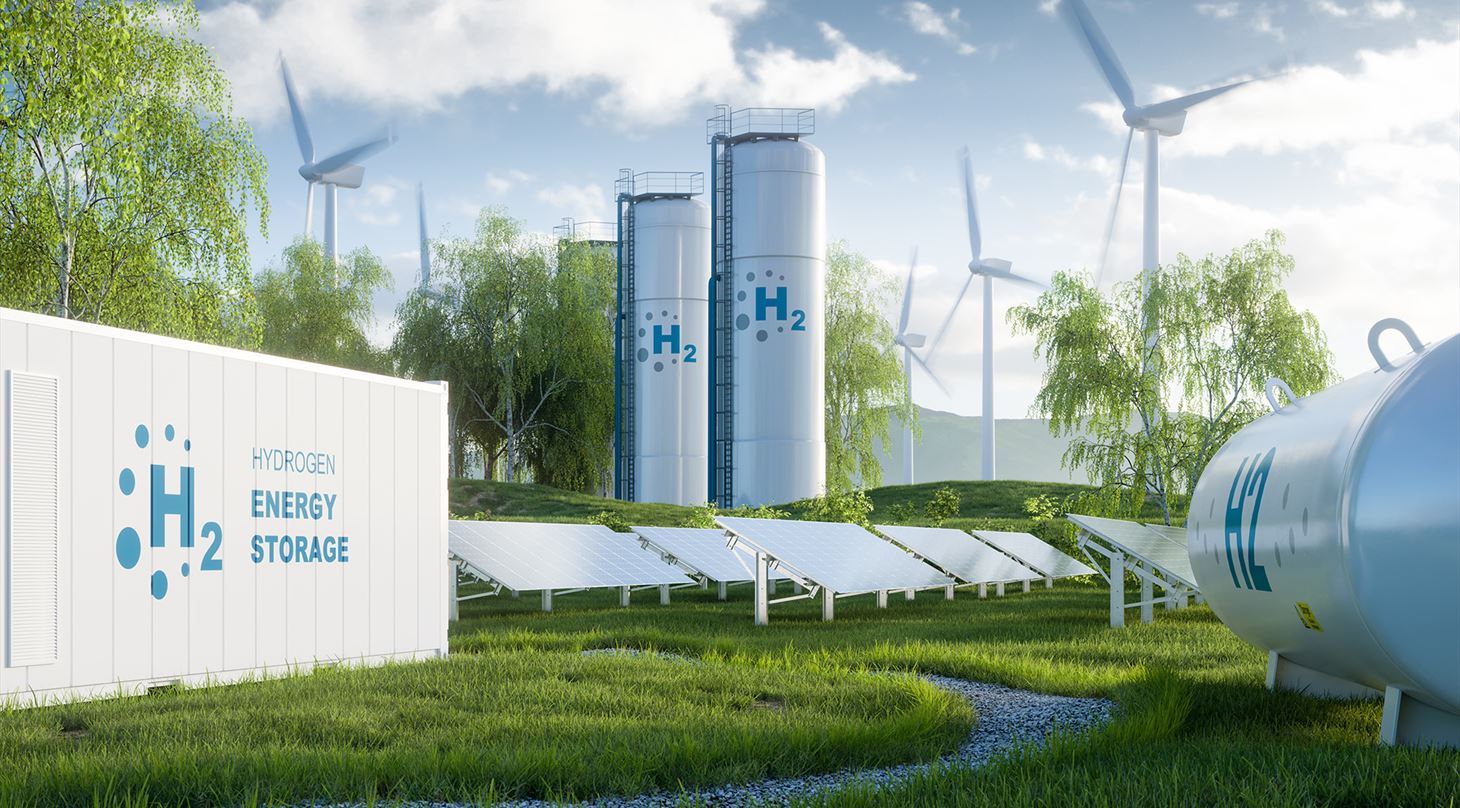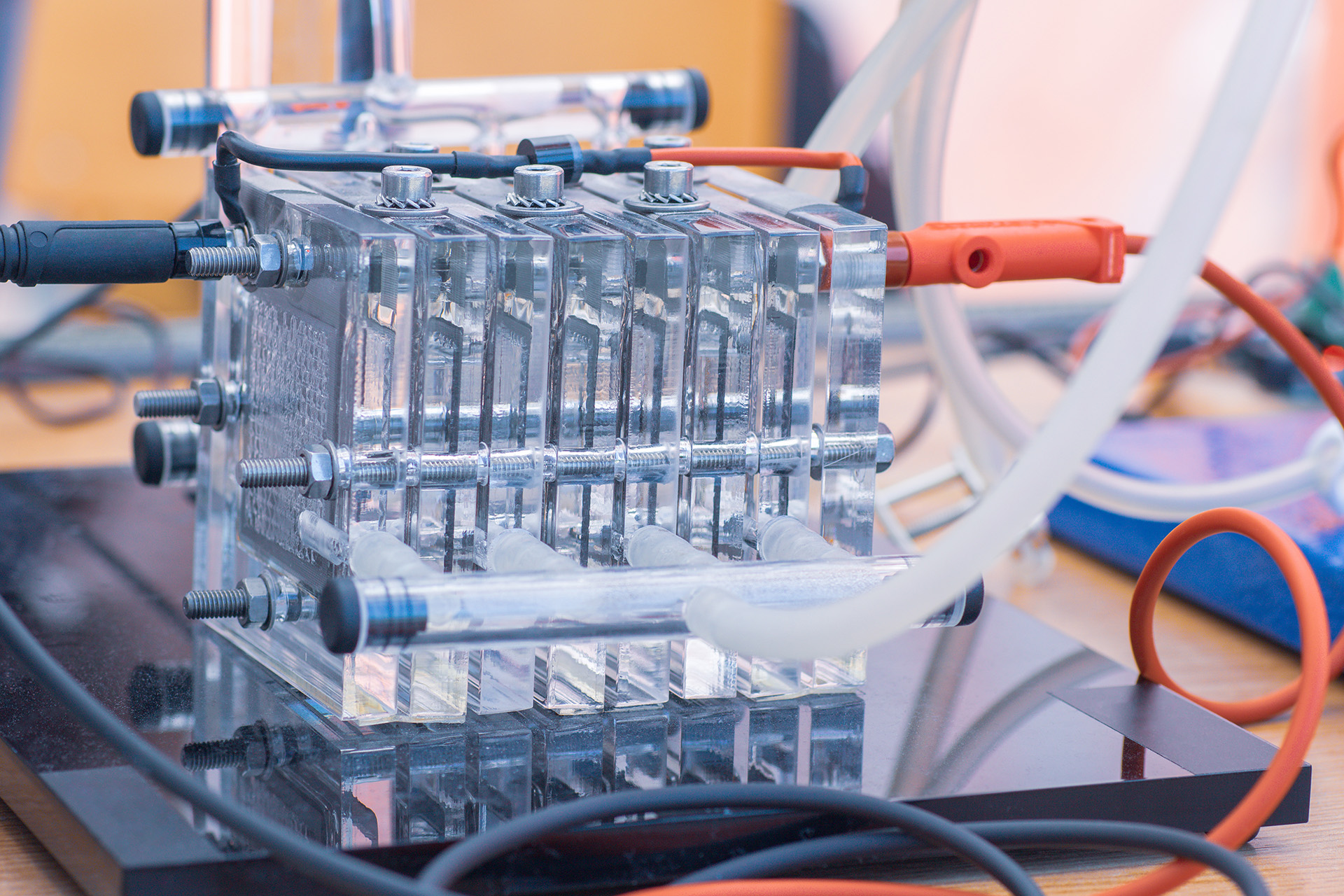
Advanced characterization of green energy solutions
Green energy technologies are rapidly advancing, leading to a constant need for good solutions to new challenges.
With advanced characterization, we can assist in gaining a deeper understanding of many of the materials and processes developed in this area. We can assist your company in the following areas:
Power-to-X (PtX)
Materials for handling of hydrogen:
There are many material challenges associated with PtX technologies, especially hydrogen.
- Hydrogen can escape through very small cracks or diffuse through the materials themselves, which can result in reduced properties and be a potential safety hazard. The Danish Technological Institute can help you understand and solve these problems.
- Hydrogen can penetrate materials and cause hydrogen embrittlement, especially in metals, which can lead to critical fractures. The Danish Technological Institute can help investigate hydrogen penetration in materials and its impact on material properties.
Understanding and optimizing processes:
Significant challenges for PtX technologies are related to improving cost-effectiveness and production capacity. This requires efficiency improvements of the individual components such as electrolyser cells, fuel cells, burners, reactors (which convert green hydrogen into other fuels), and storage materials. The Danish Technological Institute can assist by providing dynamic non-destructive 2D/3D imaging of the processes inside PtX components operating under realistic conditions, including:
- Measure liquid and gas flow inside components.
- Investigate bubble/droplet formation and movement inside components.
- Assist in optimizing the component to operate at full capacity without flow related bottlenecks.
- Monitor and understand the changes in efficiency caused by modifying parameters such as pressure, temperature, power, and geometry.
- Optimize component design (e.g., layer thickness and geometry) and operating parameters (e.g., temperature or power).
This information can be used as input for numerical modeling or directly to optimize the output of a component by adjusting operating conditions and component design.

Batteries
Advanced characterization allows, among other things, the determination of structure and dynamics in batteries at various length scales. We can assist in:
- Understanding the internal structure: With 3D mapping, it is possible to create full models of the battery structure with sub-micrometer resolution. It is possible to focus on different components such as electrode structure or the position of Li-ions.
- Studying electrolytic fluids: Many batteries suffer from imperfect filling with electrolytic fluid or fluid leakage. It is possible to determine the precise filling level and identify potential leakage points using neutron radiography.
- Understanding chemical reactions by studying the structure and phases of electrode materials, as well as mapping the distribution of elements such as Lithium and determining their chemical relationship. This can also be investigated during charging and discharging.
- Studying battery aging by examining structure and chemical reactions over multiple charge/discharge cycles.
- Performing failure analysis on batteries either by studying the processes inside the battery under critical load or by conducting post-mortem analyses.
- Conducting in situ studies where the above-mentioned aspects are investigated while the battery is exposed to specific environmental conditions such as frost or high temperatures, vibrations, mechanical stress, or even conditions closely resembling those in outer space.
Wind energy
Advanced characterization can help understand many of the materials contained in a wind turbine. We offer various forms of characterization of steel and composites, as well as the characterization of magnets to understand domain sizes, orientations, and mobility.
Solar energy
It is possible to investigate the structure of solar cells, including semiconductors, electrodes, and thin films, on both macroscopic and microscopic levels, and determine defects, impurities, crystal structures, and interfaces. These methods can be used to develop new cells and to understand how the efficiency of cells can be improved.